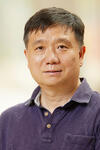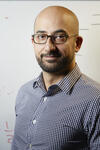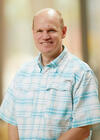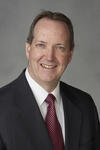In The News: Department of Physics and Astronomy
Gravitational waves from the smashup came from the same part of sky at almost the same time
It is said that science is a mosaic of contributions from all over the world. Modern science has, however, been hailed as a product of Western civilization for centuries, with the narrative of its history centered around seventeenth-century European gentlemen, who distinguished themselves from the scholastic schoolmen of yore by seeking to uncover the laws of nature. This narrative has provided a powerful resource to explain the economic and political hegemony of Europe in the centuries to follow. But how accurate is the idea and notion of formulating science as a product of Western attitudes? And if that’s not the case, is it more incumbent than ever for the science community at large to help the world regard science as a global enterprise?
Has the quest for room temperature superconductivity finally succeeded? Researchers at the University of Rochester (U of R), who previously were forced to retract a controversial claim of room temperature superconductivity at high pressures, are back with an even more spectacular claim. This week in Nature they report a new material that superconducts at room temperature—and not much more than ambient pressures.
The answer is complicated. It depends on what you mean by efficiency, as well as on some pretty important assumptions.
The harshest arctic winters have got nothing on the chill from deep space. The James Webb Space Telescope (JWST) continues to provide gifts for scientists and space enthusiasts with its latest discovery: ice found within the deepest reaches of an interstellar molecular cloud. As reported in the journal Nature Astronomy, the JWST measured the frozen molecules at minus 440 degrees Fahrenheit (minus 263 degrees Celsius).

NASA’s long in-development ARTEMIS lunar space missions completed its first phase last month. The idea is to land someone on the moon in two years. Then from there, head to Mars. And the University of Nevada, Las Vegas is helping out.

NASA’s long in-development ARTEMIS lunar space missions completed its first phase last month. The idea is to land someone on the moon in two years. Then from there, head to Mars. And the University of Nevada, Las Vegas is helping out.

Flat Earth theory, the erroneous idea that the Earth is flat, continues to persist online despite overwhelming evidence to the contrary.

An unusual bright blast of light detected by multiple telescopes in December 2021 was the result of a rare cosmic explosion that created a wealth of heavy elements such as gold and platinum.
An international team of astrophysicists has reported the discovery of a unique cosmological gamma-ray burst (GRB) that defies current theories of how the violent cosmic explosions form. This exceptional burst has resulted in a new proposed model, or source, for certain types of gamma-ray bursts.

Scientists have ample evidence to prove the Earth is a sphere. But some social media users claim to have devised an experiment showing the earth is flat.
Astronomers have spotted a bright gamma-ray burst that upends previous theories of how these energetic cosmic eruptions occur.



